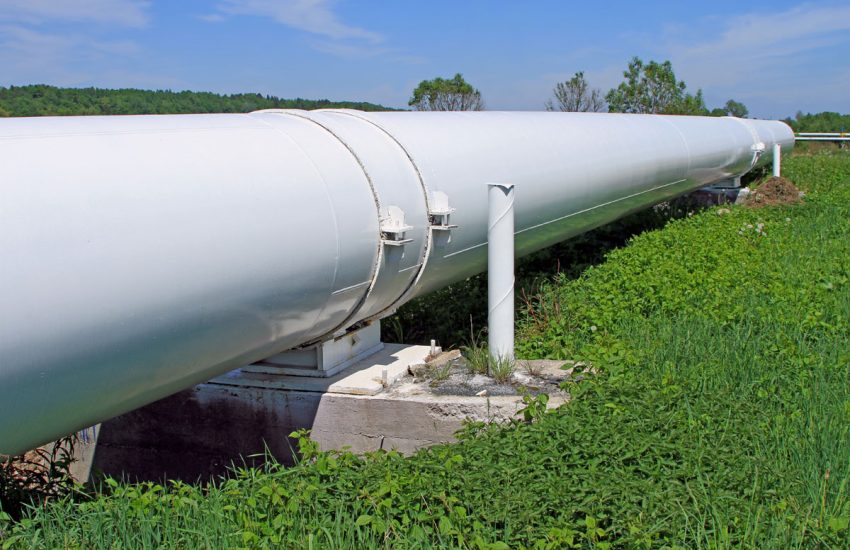A pipeline coating is a cost-effective and sensible solution that is done purposely to maintain pipelines’ integrity. This coating helps in providing a constant protective lining that helps in saving pipelines from the damaging effects of corrosion. Pipeline coating is considered as one of the most reliable corrosion prevention methods used by industries today worldwide. However, pipeline coating is not an easy task; it requires a process that has a lot of steps to follow to get into a successful pipe coating mission. We will talk about its process, but before that, let us jump into the uses of pipe coating.
So, it is usually used to refrain the negative effects of corrosion on pipeline operation, capacity, and costs take its originality because the pipelines that are uncoated can lead to corrosion. Though, that corrosion can be removed. However, its disposal can be hazardous to nature.
Pipeline coatings provide the following advantages:
- It improves the gas flow as its surface is all smooth.
- It decreases the cost of energy as coated pipelines create a huge difference in minimising the compression cost and pumping over the lifespan of a pipe.
- It minimises the need for inhibitors and also looks forward in promoting the clean delivery of the product which can consequently serve as a cost-effective and low maintenance option for corrosion control that offers ample and trustworthy protection.
Pipe Coating Process
All pipe ends are protected with end caps as a standard before the starting of the blast cleaning process. Preparation of a pipe is a very significant factor in the application of coatings; therefore, particular attention is paid to the cleaning process to achieve the highest standard possible. The process has two external blast cabinets, and the first one uses steel shot next to steel grit in the second machine. The most appropriate grades of abrasive and control parameters are selected to ensure optimum results.
- Bare pipe entry
- Washing pipes and it’s preheating then
- Cleaning of blast and inspection
- Heating the pipes
- Coating the pipes with heating powder
- Adhesive spray
This coating process that is done by pipe coating manufacturers in India, does multiple tests and inspection stages in addition to initial pipe receipt and final inspections. Infra-red detection equipment monitors ambient and pipe temperature parameters; coating application is controlled in a very meticulous way.
- Quenching
- Cut back preparation, holiday
- Internal blast cleaning
- Internal coating application
- Curing
- Final inspection
- Storage in stockyard
The pipeline manufacturers in India utilise expertise and experience that they get from the steel, coatings and hydrocarbons industries. They fathom the difficulty of coated line pipe performance. Their make a commitment to deliver world-class coated line pipe which is reflected in the fact that their team holds third party approvals and accreditations. To maintain skills and keep abreast of coating technology, they invest in an ongoing training programme both in house and outside as well. Also, the coating process by them is done in three different ways
1.Fusion bonded epoxy powder coating
Fusion bonded epoxy coating is often known by a name as fusion-bond epoxy powder coating and in general, it is called an FBE coating. It is basically an epoxy-based powder coating that is used by a lot of people to defend steel pipe that is used in pipeline construction from corrosion. FBE coatings are thermoset polymer coatings.
2. Three-layer polyethylene/propylene (3LPE/3LPP)- 3LPE/ 3LPP coating is a system with multilayer coatings and it also has three functional components: a high-performance fusion bonded epoxy (FBE), followed by a copolymer adhesive and an outer layer of Medium Density Polyethylene (MDPE) or High-Density Polyethylene (HDPE), which helps in providing protection against external corrosion.
3..CTE
It is a thermoplastic polymeric coating. It is usually made up of four main components: primer, coal tar enamel, glass fiber inner-wrap, and glass fiber outer-wrap.
The CTE has the following codes and standards, AWWA C203, BS 4164 or IS 10221.
- Primer: It might have a quick-drying synthetic primer for cold application.
- Coat Tar Enamel: Coal tar enamel shall consist of a uniform mixture of modified coal tar and inert non-fibrous filler.
- Inner Wrap: The fiberglass inner wrap shall be thin and flexible, the uniform mat of compressed glass fibers. The inner wrap shall be reinforced type.
Zinc Flake Coating Suppliers India , Acid Zinc Plating Chemicals



